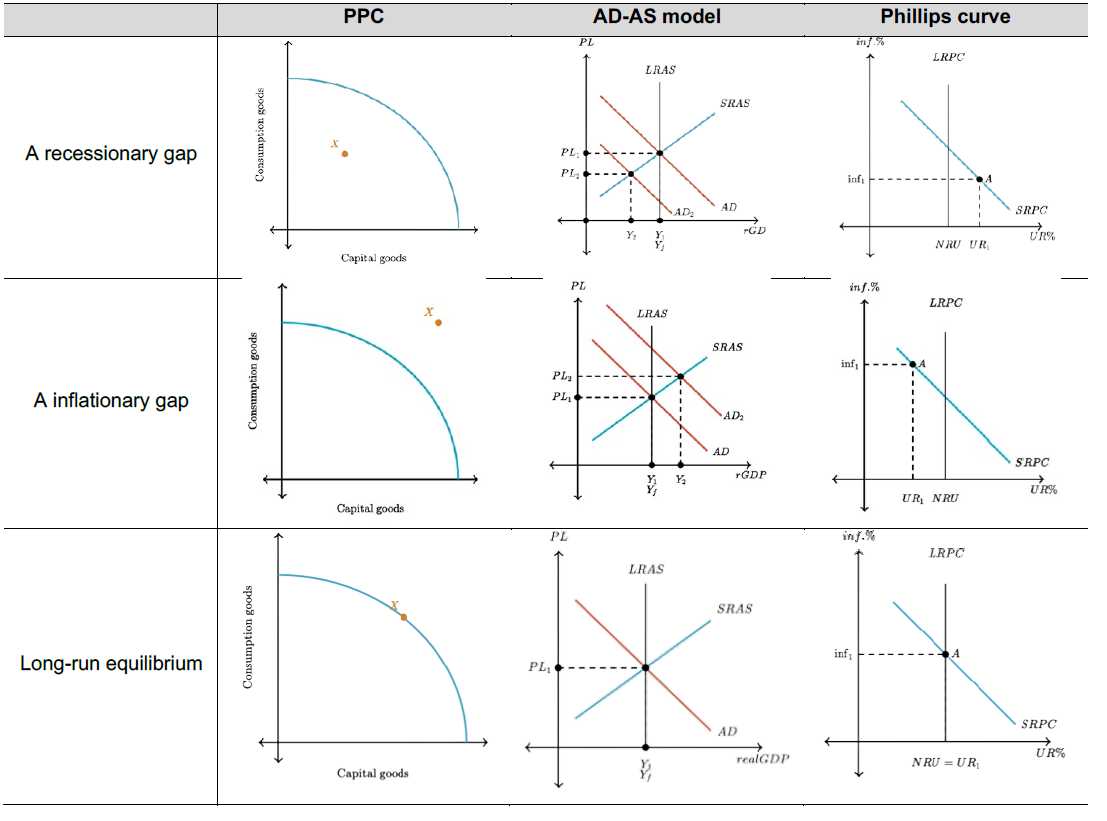Chapter 6 Economic Growth
Economic growth 经济增长
• 经济增长(Economic growth)可以用一段时间内人均真实GDP(real GDP per capita)的增长率来衡量。
• 资源数量的增加
• 资源质量/生产力的提高
• 技术进步
人均真实GDP = \dfrac{真实GDP}{总人口}
Graphs of economic growth 经济增长的图像
• 经济增长可以用生产可能性边界(PPC)向外移动或长期总供给曲线向右移动来描述

Determinants of resource availability 资源可用性的决定因素
| Land | Labor | Capital |
|---|---|---|
| 发现新的自然资源 农业和灌溉的进步 |
劳动力的增长 政府补贴的照顾孩子 教育和培训计划 |
capital stock增加 资本股票的税收减免 更低的利率 储蓄增加→借贷成本降低 |
Determinants of productivity 生产率的决定因素
• Productivity 生产力是每单位投入的产出
• Labor productivity 劳动生产率是指每单位劳动的产出
• 每个工人物质资本量(stock of physical capital)的增加 → 劳动生产率的提高
• 政府对教育的补贴 → 人力资本(human capital)投资 (skills and knowledge) → 劳动生产率的提高
• 增加研究经费(research grants) / 研究科技的税收减免(tax credits) → 技术进步
Supply-side policy 供给侧政策
供给侧政策 目的是 增加总供给AS
• Cutting corporation tax – more funds to invest and encourage investment AD↑
• Cutting income tax – increase working hours, accept promotion and greater responsibility AD↑
• Reducing welfare payments – encourage the unemployed to put more effort into searching for a job AD↓
• Increasing spending on education and training – increase workers’ skills and productivity AD↑
• Increasing spending on infrastructure – reduce firms’ transport costs AD↑
• Increasing government subsidies – lower firms’ costs of production to increase output AD↑











Comments | 1 条评论
第一眼看成API Review Notes